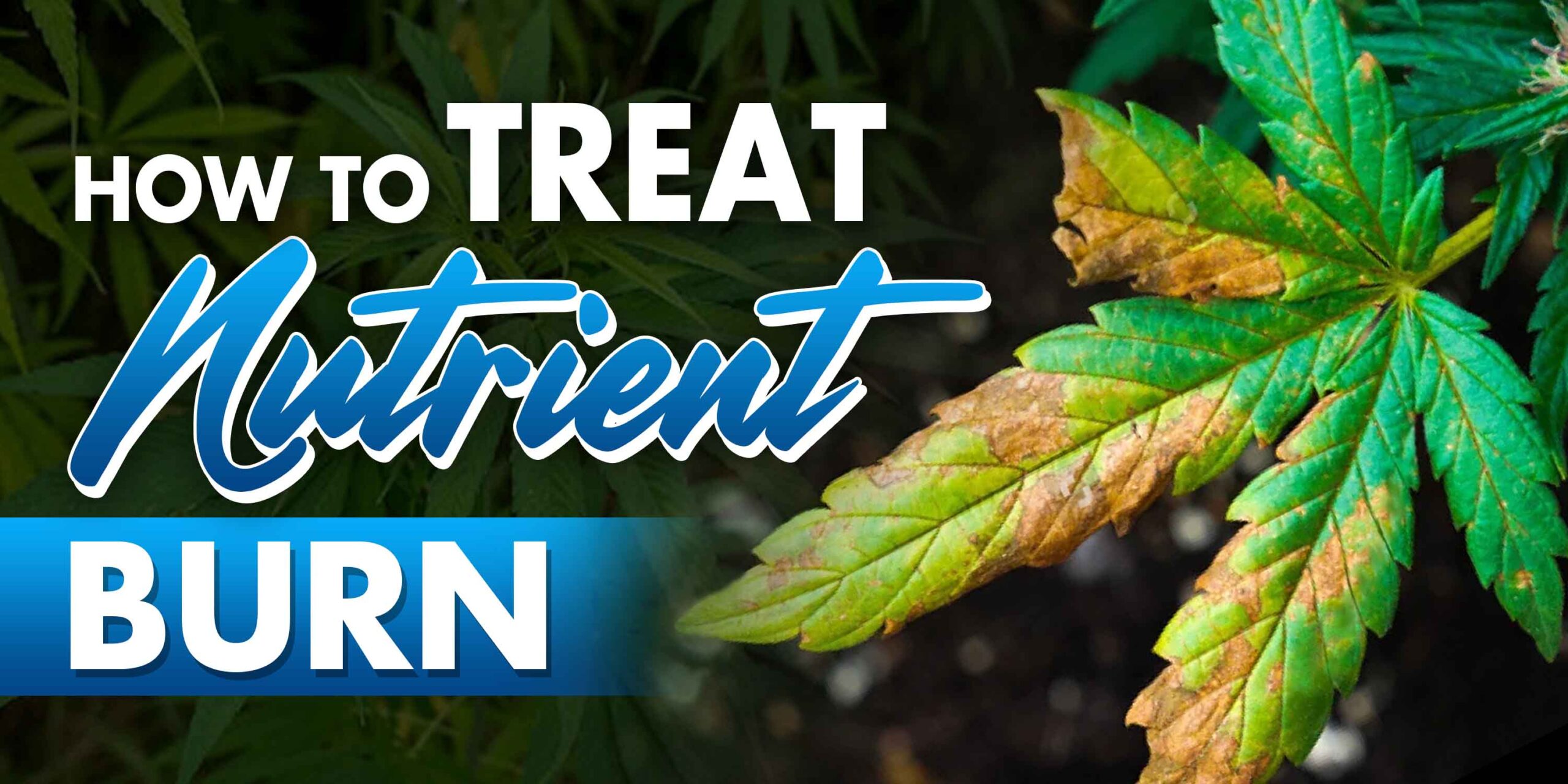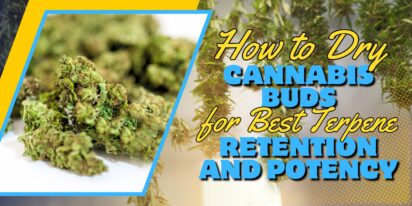Table of Contents

Table of Contents
Nutrient burn occurs when plants receive an excess of nutrients, leading to chemical imbalances within their systems. This overabundance disrupts normal metabolic functions, resulting in visible damage. Symptoms may include yellowing or browning of leaves, leaf tip burn, and overall diminished vitality.
To effectively address nutrient burn, it’s crucial to identify the underlying causes and implement targeted solutions.
Recognizing the signs of nutrient burn is the first step in addressing the issue. Common symptoms include:
Nutrient burn can also manifest differently depending on the type of plant and the specific nutrients involved. Some plants may exhibit symptoms more prominently than others, making it essential to closely monitor your plants’ health.
Nutrient burn often indicates an imbalance in essential macronutrients such as nitrogen (N), phosphorus (P), and potassium (K), as well as micronutrients like iron, magnesium, and calcium. These nutrients play crucial roles in plant growth and development, and an excess or deficiency can disrupt metabolic processes.
Nitrogen, for example, is essential for leafy green growth but can cause burn symptoms when overapplied. Phosphorus is vital for root development and flowering but can lead to toxicity if levels are too high. Potassium helps regulate water uptake and enzyme activation but can result in leaf scorch if present in excess.
By understanding the roles of different nutrients and their effects on plant health, you can better diagnose and treat nutrient burn effectively.
Addressing nutrient burn requires a multi-faceted approach tailored to the specific needs of your plants. Here’s a step-by-step guide on how to effectively treat nutrient burn:
Begin by flushing the soil with plain, pH-balanced water. This helps to remove excess salts and nutrients accumulated in the soil, restoring a healthier balance. Ensure thorough watering until runoff is clear.
Review your fertilization regimen and adjust nutrient levels accordingly. Opt for a balanced fertilizer with an N-P-K ratio appropriate for your plant species. Gradually reintroduce nutrients to avoid further stress.
Evaluate your watering schedule to prevent overhydration, which can exacerbate nutrient burn. Allow the soil to partially dry between watering sessions, ensuring proper drainage to prevent waterlogging.
Trim away damaged foliage to promote new growth and prevent the spread of stress signals throughout the plant. Use sterile pruning tools to minimize the risk of infection.
Ensure your plants receive sufficient light exposure suited to their specific requirements. Proper lighting encourages photosynthesis and enhances overall plant resilience.
Improve air circulation around your plants to reduce humidity levels and minimize the risk of fungal infections. Use fans or natural ventilation to create a conducive growing environment.
Supplement soil nutrients with foliar feeding, applying a diluted fertilizer solution directly to the leaves. This facilitates rapid nutrient absorption and supports plant recovery.
Incorporate organic soil amendments such as compost or aged manure to improve soil structure and nutrient retention. These natural amendments provide a slow-release source of nutrients, promoting long-term plant health without the risk of burn.
Monitor soil pH levels and make adjustments as needed to optimize nutrient availability. Most plants prefer slightly acidic to neutral soil conditions, so use pH testing kits to ensure the soil remains within the optimal range.
Avoid over-reliance on synthetic fertilizers and instead focus on balanced feeding with organic alternatives. Organic fertilizers release nutrients gradually, reducing the risk of nutrient burn while promoting soil health and microbial activity.
If nutrient burn persists despite your efforts, consider seeking advice from a professional horticulturist or agricultural extension service. They can provide personalized recommendations based on soil tests and plant observations, helping you address underlying issues effectively.
Once you’ve successfully treated nutrient burn, take preventative measures to avoid recurrence in the future. This includes maintaining proper fertilization practices, monitoring soil health, and regularly inspecting plants for signs of stress or nutrient deficiencies.
Continue to monitor your plants’ health and make adjustments as needed to ensure they remain vibrant and thriving. Regular observation allows you to detect early warning signs of nutrient imbalances or other issues, preventing future problems before they escalate.
In conclusion, nutrient burn is a manageable issue that requires proactive intervention and proper care. By following the outlined steps and implementing targeted solutions, you can effectively treat nutrient burn and restore your plants to optimal health and vitality. Remember to stay vigilant, prioritize plant health, and enjoy the rewarding experience of nurturing thriving greenery.

Curious about growing weed in a healthy, effective way? Welcome to the realm of weed hydro! This method uses water instead of soil, delivering n

Peyote Zkittlez is a unique cannabis strain that has quickly gained dedicated followers among enthusiasts and patients alike. Its parentage—Zk

As growers, we want strains that work well, are strong, and are of good quality. Autoflowering cannabis strains are a big step forward for both

Pot growers always ask the same basic question: How much weed does a weed plant produce? The answer is complex and depends on a multitude of var

Ever had the room spin after a few hits? You're not alone. Figuring out how to prevent getting dizzy high can make your cannabis experience a wh

Drying cannabis properly is a critical process in preserving the plant's full aroma and flavor and its psychoactive abilities. Tampering with th

Ever caught yourself a bit too high and all of a sudden in need of being normal? Whether you're heading out for munchies or bumping into someone

Looking for sage advice on how not to get pinched with weed without batting an eye? Attempting to protect your stash from gossipy roommates, sno

Nutrient lockout, also known as nutrient binding or chemical antagonism, is a significant issue in cannabis cultivation that negatively impacts

Germination is the most critical initial stage in growing healthy, high-quality cannabis plants. During germination, the dormant seed becomes a
Are You 18 Or Over?
By selecting “Continue”, you confirm that you are at least 18 years of age and legally permitted to access cannabis related content in your region.
By using Rocketseeds.com, you agree to our legal disclaimer.
Excellent blog here Also your website loads up very fast What web host are you using Can I get your affiliate link to your host I wish my web site loaded up as quickly as yours lol
Your writing is not only informative but also incredibly inspiring. You have a knack for sparking curiosity and encouraging critical thinking. Thank you for being such a positive influence!
Simply wish to say your article is as amazing The clearness in your post is just nice and i could assume youre an expert on this subject Well with your permission let me to grab your feed to keep updated with forthcoming post Thanks a million and please carry on the gratifying work
Somebody essentially lend a hand to make significantly articles Id state That is the very first time I frequented your website page and up to now I surprised with the research you made to make this actual submit amazing Wonderful task
Your blog is a beacon of light in the often murky waters of online content. Your thoughtful analysis and insightful commentary never fail to leave a lasting impression. Keep up the amazing work!
Thank you for the auspicious writeup It in fact was a amusement account it Look advanced to more added agreeable from you By the way how could we communicate
Your blog is a constant source of inspiration for me. Your passion for your subject matter shines through in every post, and it’s clear that you genuinely care about making a positive impact on your readers.
Your blog is a constant source of inspiration for me. Your passion for your subject matter is palpable, and it’s clear that you pour your heart and soul into every post. Keep up the incredible work!
Your articles never fail to captivate me. Each one is a testament to your expertise and dedication to your craft. Thank you for sharing your wisdom with the world.
Your blog is a testament to your dedication to your craft. Your commitment to excellence is evident in every aspect of your writing. Thank you for being such a positive influence in the online community.
Your writing has a way of resonating with me on a deep level. I appreciate the honesty and authenticity you bring to every post. Thank you for sharing your journey with us.
Your blog is a true gem in the world of online content. I’m continually impressed by the depth of your research and the clarity of your writing. Thank you for sharing your wisdom with us.
Hi i think that i saw you visited my web site thus i came to Return the favore Im attempting to find things to enhance my siteI suppose its ok to use a few of your ideas
Somebody essentially help to make significantly articles Id state This is the first time I frequented your web page and up to now I surprised with the research you made to make this actual post incredible Fantastic job
Usually I do not read article on blogs however I would like to say that this writeup very compelled me to take a look at and do so Your writing taste has been amazed me Thanks quite nice post
Your blog has quickly become one of my favorites. Your writing is both insightful and thought-provoking, and I always come away from your posts feeling inspired. Keep up the phenomenal work!
Every time I visit your website, I’m greeted with thought-provoking content and impeccable writing. You truly have a gift for articulating complex ideas in a clear and engaging manner.
Hey there You have done a fantastic job I will certainly digg it and personally recommend to my friends Im confident theyll be benefited from this site
I have read some excellent stuff here Definitely value bookmarking for revisiting I wonder how much effort you put to make the sort of excellent informative website
Nice blog here Also your site loads up very fast What host are you using Can I get your affiliate link to your host I wish my site loaded up as quickly as yours lol
What i do not understood is in truth how you are not actually a lot more smartlyliked than you may be now You are very intelligent You realize therefore significantly in the case of this topic produced me individually imagine it from numerous numerous angles Its like men and women dont seem to be fascinated until it is one thing to do with Woman gaga Your own stuffs nice All the time care for it up
Your blog is a beacon of light in the often murky waters of online content. Your thoughtful analysis and insightful commentary never fail to leave a lasting impression. Keep up the amazing work!
Your blog is a breath of fresh air in the often stagnant world of online content. Your thoughtful analysis and insightful commentary never fail to leave a lasting impression. Thank you for sharing your wisdom with us.
Your blog is a beacon of light in the often murky waters of online content. Your thoughtful analysis and insightful commentary never fail to leave a lasting impression. Keep up the amazing work!
Usually I do not read article on blogs however I would like to say that this writeup very compelled me to take a look at and do it Your writing style has been amazed me Thank you very nice article
Your writing has a way of resonating with me on a deep level. I appreciate the honesty and authenticity you bring to every post. Thank you for sharing your journey with us.
This hydroponics guide is quite the buzz, seriously! Who knew growing weed without dirt could be so complicated yet potentially rewarding? The breakdown of systems like DWC and NFT is helpful, though I suspect my cat might confuse the air pump for a toy. The idea of cleaner buds is tempting, especially since explaining hydro weed to my non-growing friends might get messy. And the bit about potential dizziness from hydro weed? Perfect, now I have an excuse for why I always stumble a bit after a grow session. Still, the promise of faster grows and higher yields is hard to ignore, even if it means more trips to the pH meter than to the coffee shop. Overall, a cultivating read for the curious grower!